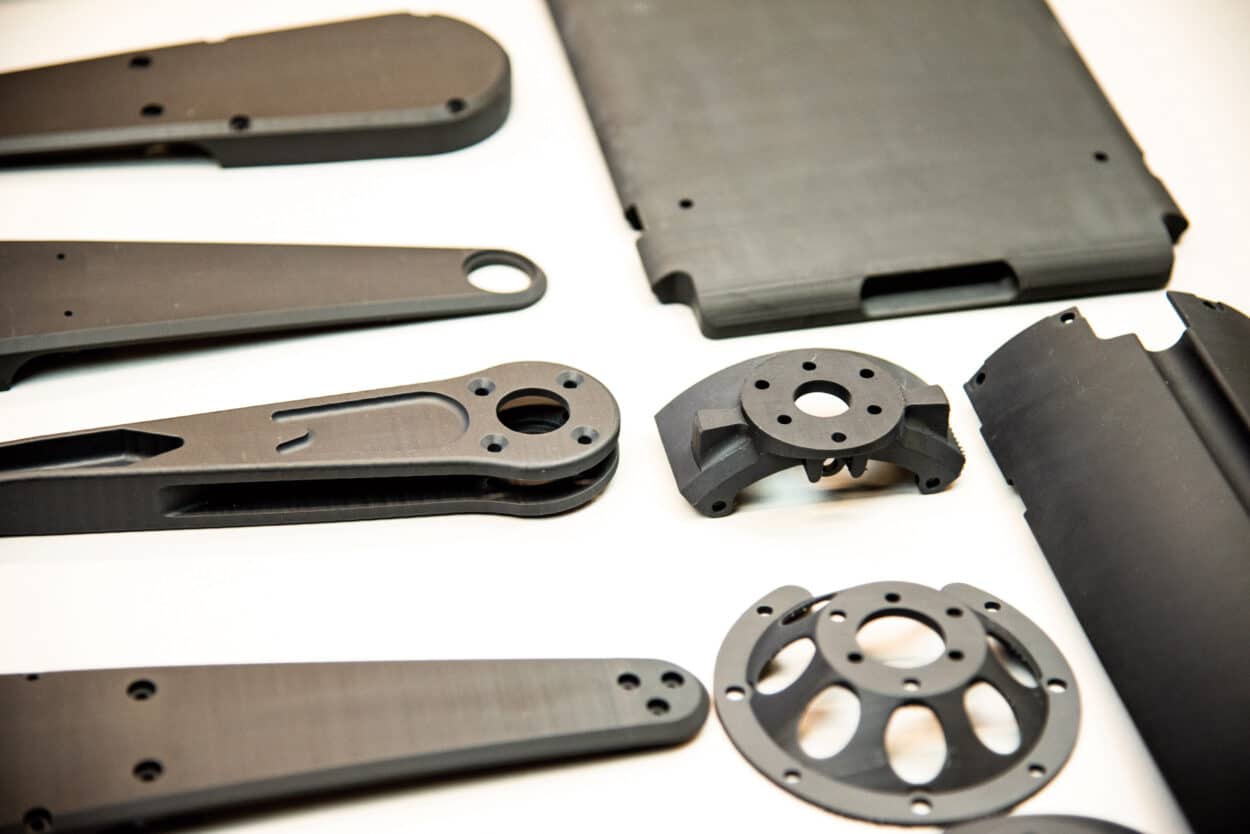Ten years in the past, 3D printing was very not often a subject of debate for manufacturing at scale, regardless of the applied sciences’ inherent benefits. On this characteristic, Daniel Princ, Head of Manufacturing, P3 EMEA & APAC at Stratasys, examines why producers ought to look once more on the newest technology of 3D printers when searching for versatile manufacturing options.
By Daniel Princ, Head of Manufacturing, P3 EMEA & APAC at Stratasys
From Design Desk to Manufacturing facility Flooring
One of many greatest buzzwords within the 3D printing/additive manufacturing (AM) business is ‘manufacturing’. The applied sciences that make up the AM ecosystem have for over 30 years established themselves because the ‘go-to’ answer for prototyping throughout almost all manufacturing sectors. They’ve even gotten a foothold for end-use functions like spare components or manufacturing instruments. The business’s dream, nevertheless, has all the time been to see AM as a real manufacturing expertise, in a position to compete with injection molding and machining for mass manufacturing functions.
Reaching manufacturing functionality isn’t straightforward. A mixture of fabric qualities, repeatability, course of stability, course of velocity, half high quality, and value per half should be superior to the entrenched conventional processes. When competing with decades- and even centuries-old applied sciences, these bars are set very excessive certainly! Nevertheless, with the most recent advances, producers ought to now be contemplating AM at each stage of their course of, from design to quantity manufacturing.
Optimizing Additive Manufacturing for Manufacturing Scale
With Stratasys’ Programmable PhotoPolymerization P3 platform, producers can remedy lots of of manufacturing challenges with a single extremely versatile system. Initially conceived as a supplies growth reactor, the P3 platform has proved itself a production-capable 3D printing expertise that opens up a brand new world of alternatives.

P3 is an evolution of the well-established digital mild processing (DLP) expertise software for AM. Half recordsdata are sliced and these slices are projected, one after the other, up onto a resin-covered construct tray. By manipulating 4 highly-controllable bodily parameters (mild, environmental stability, pneumatic separation, and movement) with a strong software program engine, P3 is ready to maximize the inherent advantages of DLP and unlock higher materials alternative, increased throughput, and elevated repeatability.
Want for Velocity
As a result of the P3 platform tasks an entire ‘slice’ of an element as a single picture, it cures the whole space in a single go fairly than tracing it out level by level. This makes the printing course of considerably quicker, whereas nonetheless permitting components as much as 192 x 108 x 370 mm or a number of nested components to the identical quantity.
Half high quality
One other historic limitation of AM that technological innovation helps to deal with is the end of the ultimate half. Historically injection molding couldn’t be crushed when it got here to floor end. However via tight management and the inherent stability of the method, components produced utilizing P3 expertise rival injection molding for floor end and aesthetic attraction. And, in fact, they are often produced in geometries unattainable to recreate with molding.
Supplies Matter
A decade in the past, obtainable photopolymer supplies instantly eliminated AM from consideration as a manufacturing expertise. Traits reminiscent of energy, toughness, temperature resistance, and elasticity have been inadequate for a lot of potential makes use of. In distinction, at this time, with developments in digitization, we will now measure and management the polymerization course of to a a lot higher diploma. Because of this, a big and rising variety of specialty supplies firms have been in a position to harness the facility of the P3 platform to push supplies expertise to new ranges. BASF, Covestro, Henkel, and others have created a photopolymer supplies choice that will have appeared unthinkable even a couple of years in the past.
We now see:
- Functions requiring high-temperature resistance — with a warmth deflection temperature of as much as 80 °C.
- Biocompatible supplies with ISO 10993-5 and ISO 10993-10 certification.
- Supplies with properties analogous to polypropylene, ABS, and commercial-grade TPUs
These materials properties can be found by way of conventional manufacturing strategies, however with additive manufacturing, they’re accessible with new ranges of manufacturing flexibility and design freedom.
Software program to Scale
As well as, Stratasys’ latest creation of its GrabCAD® Additive Manufacturing Platform, an open and enterprise-ready software program platform, permits producers to handle production-scale AM operations. This offers producers with software program designed for the distinctive wants of at-scale AM throughout the whole digital thread – from design via manufacturing – whereas additionally integrating with Trade 4.0 infrastructure and enterprise functions.
Trailblazing Use Circumstances
There are such a lot of issues producers can do with P3 expertise, the query actually turns into what ought to they do? Listed below are 4 nice alternatives at this time:
- Electrical connectors, adaptors, and wiring brackets: Sufficiently small to be nested effectively inside the P3 construct quantity and built-in vital manufacturing scale. Could make use of the high-temperature, impact-resistant, or ABS- and PP-like supplies
- Industrial machine parts —Housings, buttons, clips, seals & gaskets: Takes benefit of the manufacturing throughput for quantity manufacturing and the wonderful floor end. Could make use of ABS- and TPU-like resins, clear versatile resins, or sturdy low-cost resins.
- Medical gadget parts: Capitalise on the medical grade and biocompatible ABS- and PP-like supplies on the P3 for optimum flexibility for versatile manufacturing of biocompatible housings, fluid supply methods, and extra.
- Molds for low-pressure, low-temperature molding: Utilizing the quick-printing and -processing resins distinctive floor high quality can be utilized to generate mould for footwear parts, PU molds, or pattern moldings.
Past these examples, a world of alternative awaits, and with supplies growth persevering with at a tempo the P3 platform will solely grow to be extra versatile and remedy much more manufacturing challenges, sooner or later. As soon as the half, materials, and course of are operating in concord, AM actually can problem different applied sciences in true manufacturing.